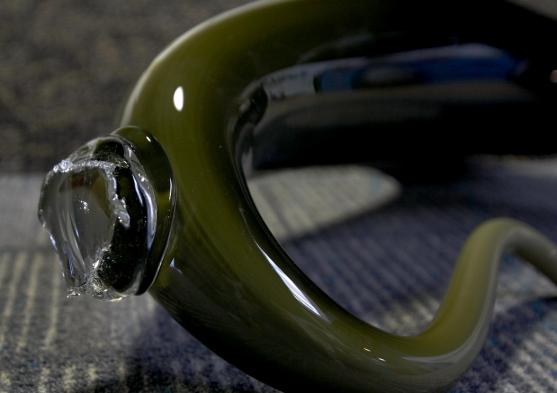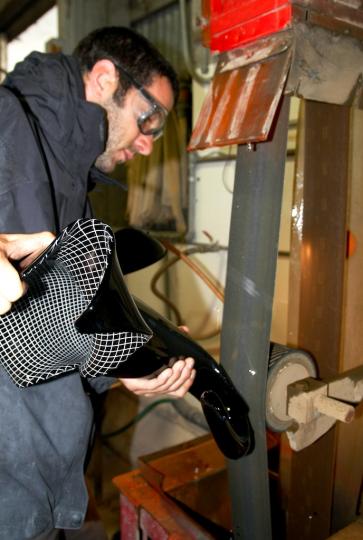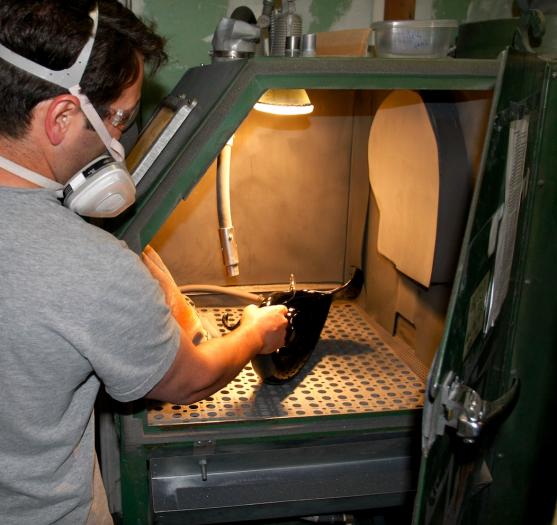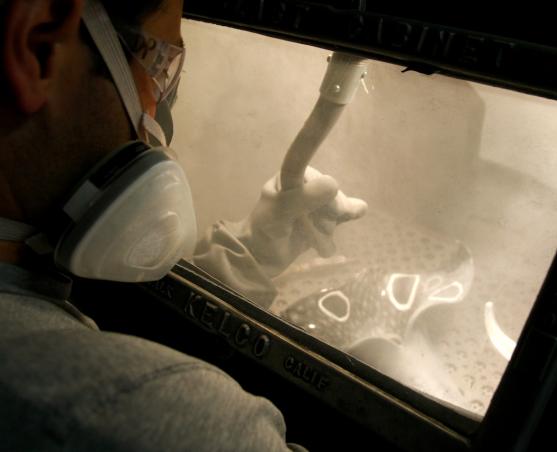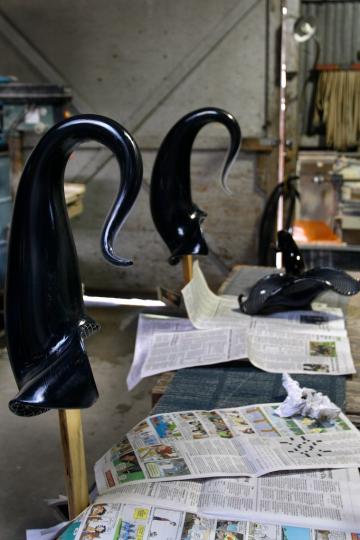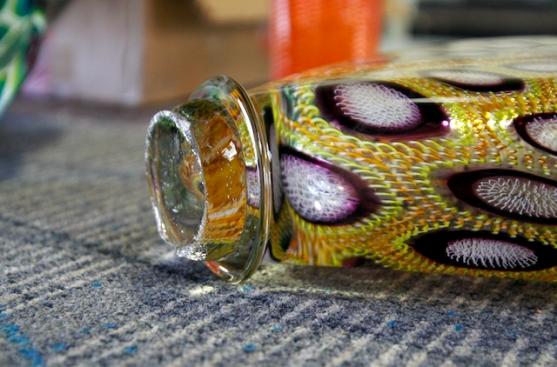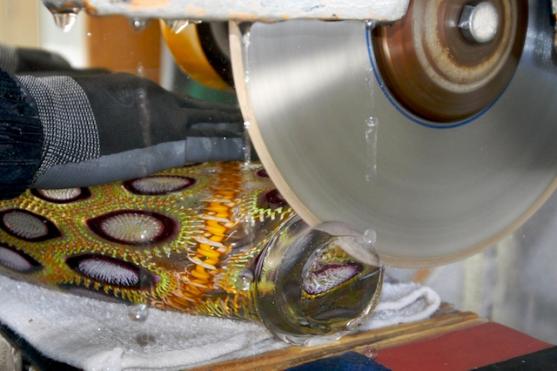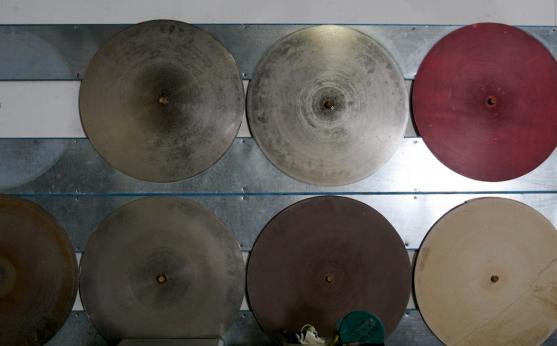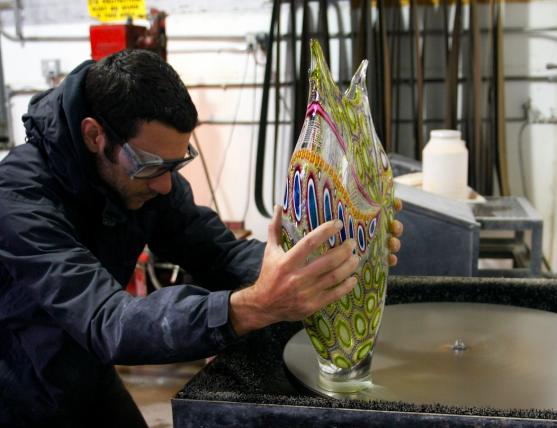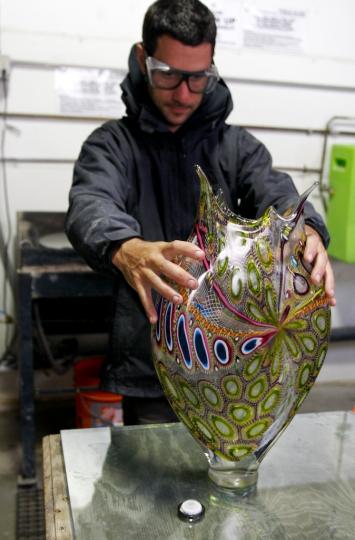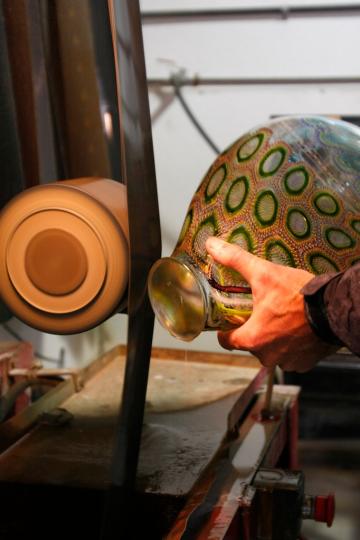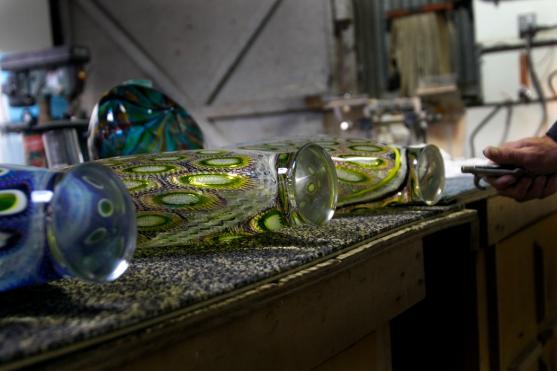After being annealed and slowly cooled over two days, all work emerges from the kiln with an extra bit of glass where the piece was attached to the punty rod. This connection point (shown here on a Bloom) needs to be cut off using a saw with a diamond blade, then carefully ground away, preserving the line of the work.













